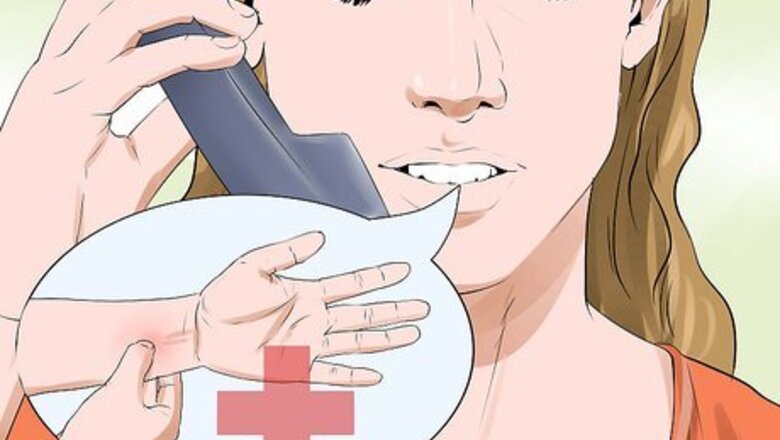
views
X
Trustworthy Source
National Health Service (UK)
Public healthcare system of the UK
Go to source
In order to properly manage a broken arm, you need to deal with the break immediately, seek medical attention, and give your arm proper time and treatment to fully heal.[2]
X
Expert Source
Jonathan Frank, MDSports Orthopedic Surgeon & Joint Preservation Specialist
Expert Interview. 31 July 2020.
Getting Treatment
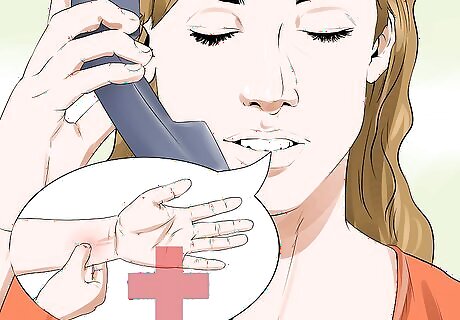
Assess the situation. Depending on the severity of the break, you may need to call emergency services or get to a local hospital. Taking a minute to assess the situation before you take any treatment measures can help prevent further injury. You likely have a broken arm if you hear a snap or cracking sound. Other signs of a break are severe pain that may increase if you move it, swelling, bruising, deformity of the arm, or trouble turning it palm up to palm down. Call emergency services or get to the hospital as soon as possible if you notice the following: The person is unresponsive, isn't breathing or isn't moving; there is heavy bleeding; even gentle pressure or movement causes pain; the extremity of the injured arm, such as a finger, is numb or bluish at the tip; you suspect a bone is broken in the neck, head or back; if the bone breaks the surface of the skin; or if the arm is deformed. If you are unable to reach emergency services, review the following wikiHow article: How to Provide First Aid for a Broken Bone.
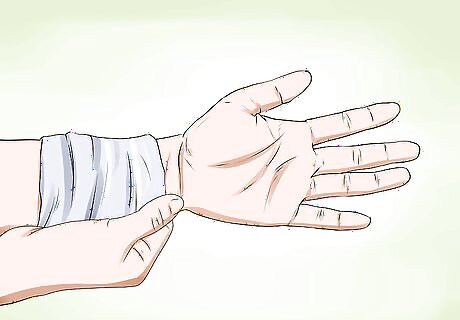
Alleviate any bleeding. If the break has caused bleeding, it’s important to stop any bleeding as soon as possible. Apply light pressure to the area using a bandage, clean cloth, or a clean article or clothing. Make sure to call emergency services or get to the hospital if any bleeding is present.
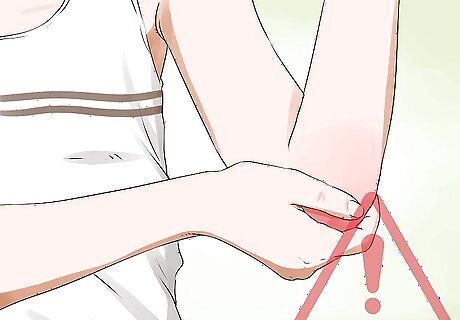
Avoid realigning the bone. If a bone is sticking out or is deformed, do not realign it under any circumstances. Get to a doctor and stabilize the arm, both of which may help prevent further injury and discomfort. Trying to realign the bone can cause further injury and pain and will likely lead to an infection.
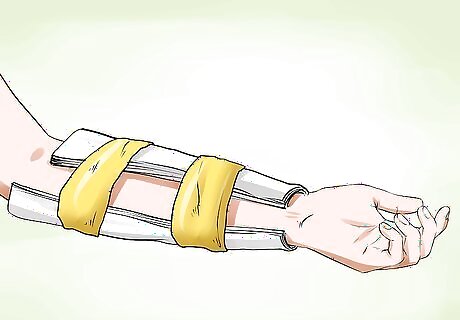
Stabilize the broken arm. It is very important to make sure excessive movement doesn't further damage the broken bone. Place a splint above and below the break to help stabilize it until you can get medical treatment. You can use a variety of items to make a splint including rolled up newspaper or towels. Either tape or wrap a sling around your arm to hold the splints in place. Padding on the splints may help relieve discomfort.
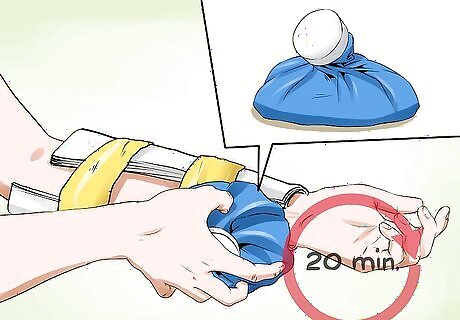
Apply a cold pack or ice to reduce pain and swelling. Place an ice pack on the break after wrapping it in a towel or cloth. This can help manage the pain and swelling until you can get to the doctor. Don’t apply the ice or pack directly to the skin, which can cause frostbite.Wrapping it in some kind of cloth or towel can help prevent frostbite. Leave the ice for 20 minutes at time until you can get to a hospital or doctor.
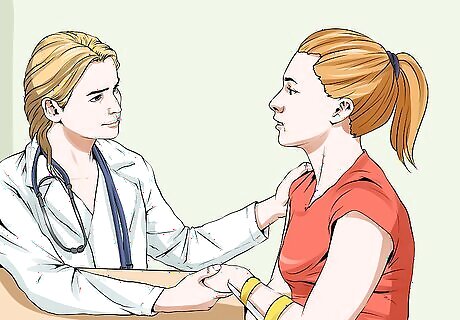
See the doctor. Depending on the severity of your break, you may require a cast, splint, or brace to stabilize the affected area. Your doctor or local hospital can decide on the best treatment for your break. Your doctor will likely ask you a series of questions while examining the broken arm including about your symptoms, their severity, and anything that makes your pain worse. Your doctor or the hospital may order X-rays or an MRI to further help determine the best treatment.
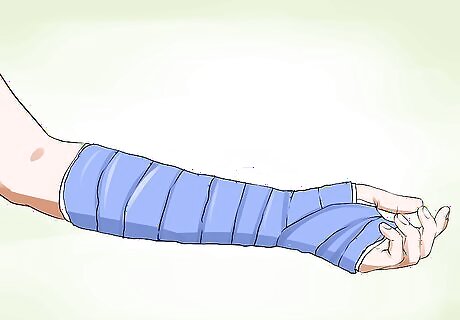
Have the bone set. If you have a break that is a displaced fracture, your doctor may need to manipulate the bone back into place. Although this can be painful, your doctor can take steps to help you get through the procedure. Your doctor may give you a muscle relaxant or a sedative while he sets your bone. Your doctor may apply a cast, a brace, splint, or sling to wear while your arm heals.
Navigating Daily Activities
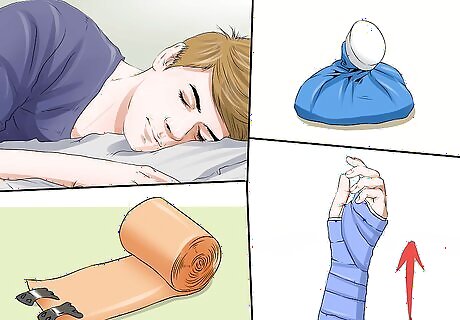
Remember to use the RICE principle. When you have daily activities to tackle, it’s important to remember the RICE (rest, ice, compression, elevation) principle. Employing RICE can help you more easily and comfortably navigate your day.
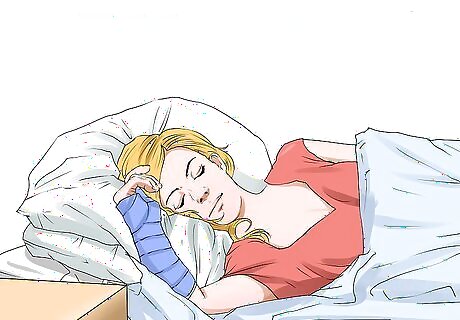
Rest your arm. Give your arm a chance to rest throughout the day. Immobility can help your arm heal properly and may also prevent pain or discomfort.
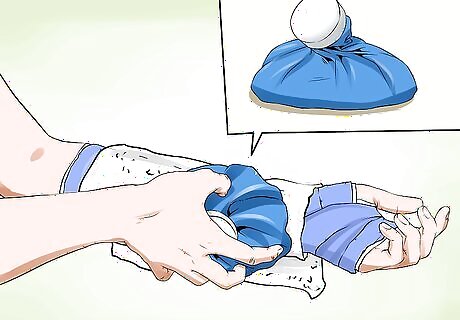
Ice your arm. Apply an ice pack on your arm. This can help reduce swelling and relieve pain. Use ice as often as necessary for 20 minutes at a time. Wrap the ice pack in a towel to protect your cast from moisture. If it is too cold or your skin gets numb, remove the pack.
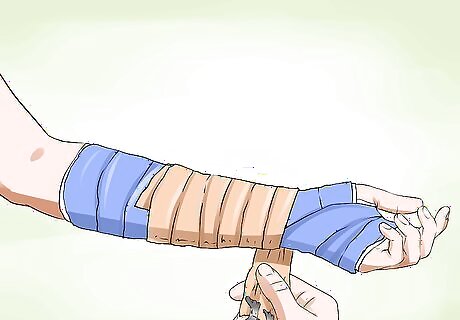
Compress your injury. Wrap or compressive elastic bandage to your arm. This can help reduce swelling and may help relieve pain. Swelling may result in loss of mobility and compression can help prevent this. Use compression until the affected area is no longer swelling or your doctor suggests it. You can get compressive wraps and bandages at any pharmacy or medical supply store, as well many large department retailers.
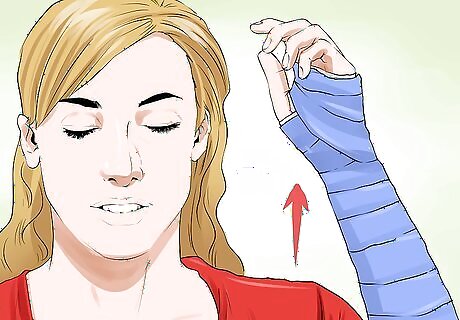
Elevate your arm above your heart. Raise your arm above the level of your heart. This minimizes swelling and may also help preserve mobility. If you cannot lift your arm, prop it up with pillows or on a piece of furniture.
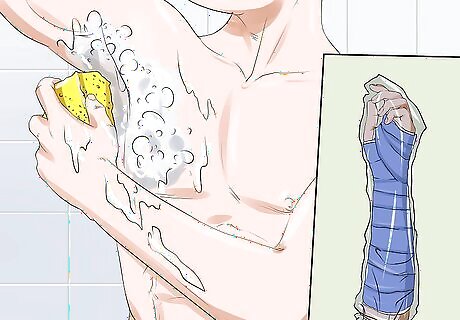
Protect your cast from water. While it may be easy to stay out of swimming pools or hot tubs, it is a little more difficult to avoid showering or bathing while your arm heals. When you shower or bathe (try a sponge bath) it is important to keep moisture away from any cast or brace you may have. This can help ensure that you heal properly and don’t develop any skin infections or irritations. You can wrap your cast in heavy plastic, such as a garbage bag or even plastic wrap. Make sure that the entire cast is wrapped and secure. You may want to put a small towel in your cast to help prevent water from leaking down the inside. Not only will this ensure the integrity of the cast, but can also help prevent skin irritations or infections. In the event that your cast gets wet, dry it with a hair dryer. This may help ensure the integrity of the cast. If the cast gets soaked, call your doctor and ask her how to proceed.

Wear sensible clothing. Putting on clothing with a broken arm can present a special challenge. Choose sensible clothing to wear each day that will be easy to put on and take off and won’t cause you any discomfort. Wear loose clothing with large arm holes. It may also be easier to wear short sleeved shirts or tank tops. If it is cold, you can wrap a sweater around the shoulder of the broken arm. Keeping your arm inside the sweater may help it stay warm. If you want to wear gloves but can’t slip them on, try putting a sock around your hand.
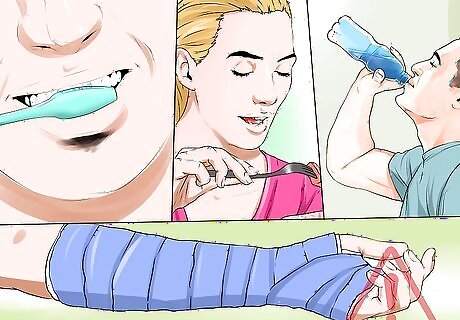
Use your opposite hand and arm. If you’ve broken your dominant arm, use your other arm as much as possible. This might take some getting used to, but it can help you stay more independent. You can learn how to brush your teeth, hair, or use kitchen utensils with your non-dominant hand.

Ask for help. It may be very challenging to do some activities by yourself with a broken arm. Consider asking a friend or family member to give you aid while you’re arm is immobile. You can ask a friend to take notes for you in class or type papers. You might also want to ask your teacher if you can tape class. You’ll find that strangers may also be more likely to offer assistance to you while you have a broken arm. From helping you with groceries to holding doors open for you, take the opportunity to rest your arm in these instances. Stay away from challenging activities. Certain activities, such as driving, may be more difficult with a broken arm. Ask your friends or family members for rides or take public transportation.
Promoting Healing
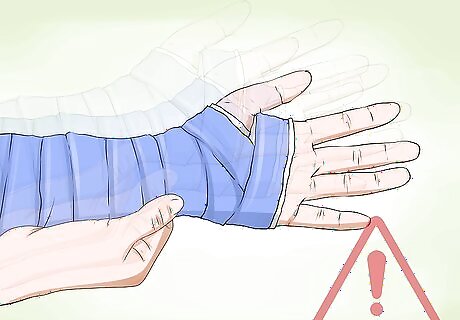
Refrain from excessive movement. Keeping your arm as still as possible can help the healing process. Whether you are wearing a cast or simply a sling, try to avoid excessive movement or hitting your arm on objects. This is especially critical if you have a break and your doctor is waiting to put a cast on once the swelling has subsided. You may want to wait a few weeks to return to your usual activities or until your doctor gives you approval.
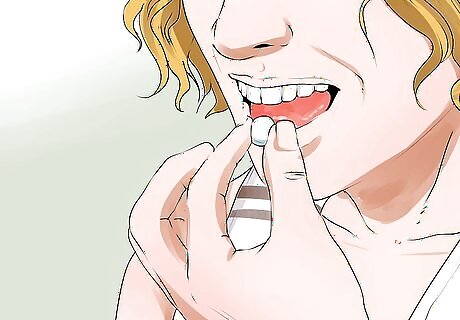
Manage pain and discomfort with medication. You may have some—or a lot—of pain with your break. Taking medication to relieve it may help you relax and could also help you keep from moving it too much. You can take either over-the-counter pain relievers such as aspirin, ibuprofen, naproxen sodium, or acetaminophen. Ibuprofen and naproxen sodium may also help to reduce swelling. Children and teenagers under 18 should not take aspirin unless approved by a doctor. You should also avoid aspirin and other medications that can thin your blood if the bone broke the skin or there is associated bleeding. If your pain is severe enough, your doctor may prescribe a pain reliever with a narcotic for a few days.
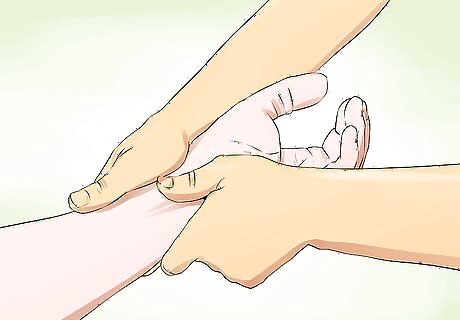
Visit rehabilitation or physical therapy. In many cases, rehabilitation therapy may begin relatively soon after your initial treatment. You may start with simple motions to minimize stiffness and gradually work up to physical therapy once your cast, brace, or sling is removed. Only undertake rehabilitation with the permission and under the direction of your doctor. Early rehabilitation may include simple movements to promote blood flow and stave off stiffness. Physical therapy can help restore muscle strength, joint motion, and flexibility once any casting or bracing is removed or if you have healed from your surgery.
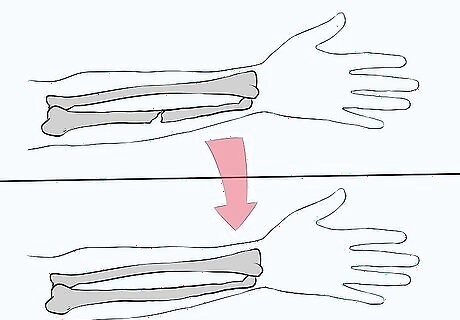
Undergo surgery for a severely broken arm. If you have a compound fracture or a fracture that breaks the bone, you may require surgery. This can help ensure that your arm heals properly and minimize your risk for subsequent breaks. During surgery, an orthopedic surgeon may insert fixation devices that stabilize your bones. Screws, nails, plates, and wires are all types of fixation devices. These help maintain the position of your bones during the healing process. During this procedure, you’ll go under local anesthesia while your doctor inserts and applies the fixation. Recovery is often dependent on the severity of the break and how well you take care of it. After surgery, you may require physical therapy to restore muscle strength, flexibility, and joint movement.
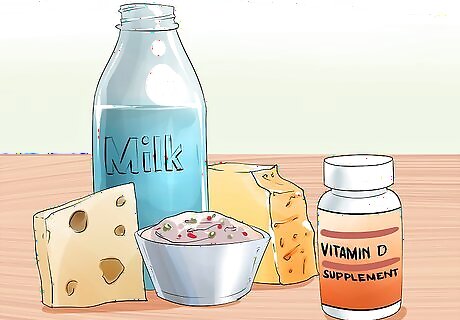
Eat foods that strengthen your bones. Eating a healthy diet that includes foods high in calcium and vitamin D can help strengthen your bones. This may also provide your body with the necessary nutrients to rebuild your arm bones and prevent future breaks. Calcium and Vitamin D can work together to help your bones get stronger. Good sources of calcium include milk, spinach, soybeans, kale, cheese, and yogurt. You can take calcium supplements if diet alone cannot provide for your calcium needs, though you should aim to get as much as you can from whole foods. Good sources of vitamin D include salmon, tuna, beef liver, and egg yolks. As with calcium, you can take Vitamin D supplements to help augment your food choices. Consider eating foods fortified with calcium or Vitamin D. Many fruit juices, such as grape or orange, may contain calcium or Vitamin D. Some milk products are fortified with Vitamin D.
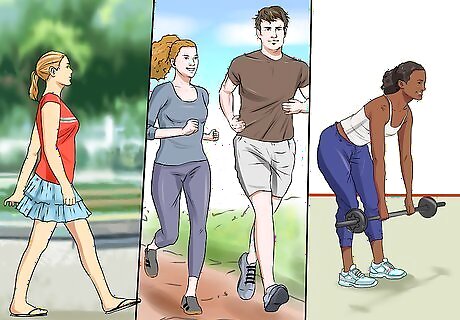
Do weight-bearing exercises to strengthen your bones. Though most people think about their muscles when they work out, your bones actually respond to exercise, too. People who exercise achieve higher bone-density than those who do not, and exercise also helps with balance and coordination, which can help prevent falls and accidents. Try weight training, walking, hiking, jogging, climbing stairs, tennis, and dancing to strengthen and maintain your bones. Make sure you check with your doctor before beginning an exercise program, especially if you have osteoporosis.




















Comments
0 comment